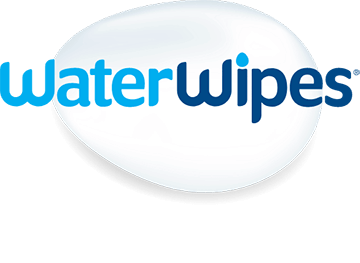The role of vernix caseosa
Babies are usually born with a sticky white substance on their skin called the vernix caseosa. This is a naturally occurring substance, that forms a protective layer on the baby’s skin whilst they are in the womb.1 As a result, traces of the vernix caseosa will usually still appear on the baby’s skin after birth.2 The amount of vernix caseosa will be less if the baby is born close to or past the due date, whilst premature babies tend to have much more left on their skin.3 It is important to reassure parents that all babies are different, and if their baby does not present with vernix caseosa, it is not a problem.
Additionally, it is best to advise parents not to wipe the vernix caseosa away, and instead, allow it to sink into newborn skin during the first 24 hours, as it will act as a natural moisturiser and help stave off bacterial infections.3 If the baby has been born late there may be less or even no vernix left on the skin because it has already been absorbed.4 The skin may as a result also be slightly dry or wrinkled.3 Parents in this situation should be advised that no additional creams need to be applied. The top layer of the baby’s skin will peel off in the first few days and leave fresh, soft skin underneath.5
Skin-to-skin contact (SCC)
Skin-to-skin contact is where the baby lies directly on their parents’ bare skin. This is often done as soon as possible after birth and it is beneficial for this to continue throughout the first few months post birth.6 Guidelines from the World Health Organization highlight that it is important for newborns without complications to have skin-to-skin contact with their mothers during the first hour after birth if possible.7 It has been shown to help comfort and calm newborns, as it helps them adjust to their new surroundings outside of the womb.7 It has also been shown to help prevent hypothermia and promote breastfeeding.6 Furthermore, evidence shows that babies who took part in skin-to-skin, cried less, interacted more with their mothers, and had improved cardiorespiratory stability and glucose levels.8 On the basis of this evidence, skin-to-skin contact should be recommended to parents, and the benefits discussed with them. Additionally, parents should be notified that it is a great way for them to bond with their baby too, and if possible, they should try and incorporate skin-to-skin contact into their daily routine for example after feeding or a bath.
In relation to baby’s skin health, having regular skin-to-skin contact will increase a newborn’s skin hydration.6 This is because it enables the colonisation of the baby’s skin with the mother’s friendly bacteria, which also helps to protect the baby from infection.9 An hour of skin-to-skin contact would be optimal, to allow the newborn to go through a full sleep and wake cycle.6 However advising parents to do even 10 minutes a day for the first 0 to 3 months can have a tremendous impact. Encouraging parents to read up on skin-to skin themselves may also be valuable, and this resource on the benefits of skin-to-skin for parents could be useful.
Bathing a newborn
The first bath is a significant milestone for many parents. The following tips can help ensure parents bathe their baby in a way best suited to their newborns’ skincare needs.
Try not to bathe them in the first 24 hours to ensure the vernix caseosa has had time to be absorbed
Don't add any liquid cleansers to the bath water. Plain water is best for your baby during the first month as their skin is so delicate
Try not to bathe them for more than five minutes and ensure the water is warm not hot, to ensure skin isn’t scalded or becomes dry10
Avoid using any fragranced soaps or products that can irritate the skin
Don’t bathe the baby every day as this can dry out the skin. Instead, two or three times a week is best11
Pat them dry rather than rubbing to avoid aggravating the skin
Alongside bathing, parents should be advised that they can also use the top and tail method to freshen up their newborn.12 This entails using a bowl of water and cotton wool and cleansing their baby’s face and neck, before working their way down to the hands and then the baby’s bottom.
Parents may find it time-consuming to always use cotton wool and water to clean their newborn, especially when they are out and about. They can instead use a mild and non-medicated baby wipe to cleanse the skin. WaterWipes are a great option as they contain just two ingredients, 99.9% high purity water and a drop of fruit extract that won’t aggravate or dry out newborn skin. They have also recently been validated by the Skin Health Alliance as purer than cotton wool and water. Therefore, they are perfect for providing a gentle and effective cleanse for the most delicate newborn skin in the first three months.
Newborn skin conditions
Many baby’s 0 to 3 months are prone to a variety of skin conditions as their sensitive skin adapts to a new environment. In the early days, parents often ask about nappy rash, cradle cap and prickly heat amongst others, as these skin conditions are common for newborns.
Nappy rash
Nappy rash is usually characterised by patches of red and sore skin, however there can also be spots or blisters and the area may feel hot to touch.13 Nappy rash is often the result of nappies rubbing or being too tight. However, it can also be caused by an alcohol-based baby wipe, or if the baby’s skin has been exposed to a wet or soiled nappy for a prolonged period.13 Parents should be advised to change a baby’s nappy as soon as they get wet and to use gentle wipes that are alcohol and fragrance free and contain minimal ingredients.
Cradle cap
Cradle cap is a greasy and flaky red rash that can appear on a newborn’s scalp and face during the first few months as a result of excess oil.10 It is best to reassure parents that it is a completely harmless skin condition. It causes the baby no pain and normally clears up on its own. However, they can try the following to help clear it up.
Wash the hair regularly with baby shampoo and then gently brush it through. Do not use soaps, fragranced products or adult shampoos as these are too harsh for a baby’s scalp
Don’t pick at or scratch the crusts – this can cause bleeding or infection14
Rub baby oil, petroleum jelly or a vegetable oil onto the scalp at night to soften the crusts. Gently wash with baby shampoo the following morning15
If the crusts leak fluid, or the cradle cap spreads over the body then parents should speak to their GP for further guidance.
Prickly heat
Prickly heat can occur in babies too and is most likely to appear in areas prone to sweat such as the diaper area or armpits.10 For newborns, this is rarely caused by sun exposure, and instead is often a result of the baby being over-dressed and bundled. Therefore, choosing loose-fitting clothing and avoiding excessive layers will help prickly heat rashes subside.
Other common baby skin conditions include baby acne, dry skin, eczema, milia, and psoriasis. If parents want more information on these conditions, they can read about them in this WaterWipes article by Consultant Dermatologist, Dr Cairine Wilkinson.
About the author
Dr Stephanie Ooi is a private GP at the MyHealthcare Clinic in London. Stephanie has a special interest in paediatrics as well as women’s physical and mental health. Alongside her professional interest, Dr Stephanie has personal experience of caring for two newborns as a mum to two young girls.

